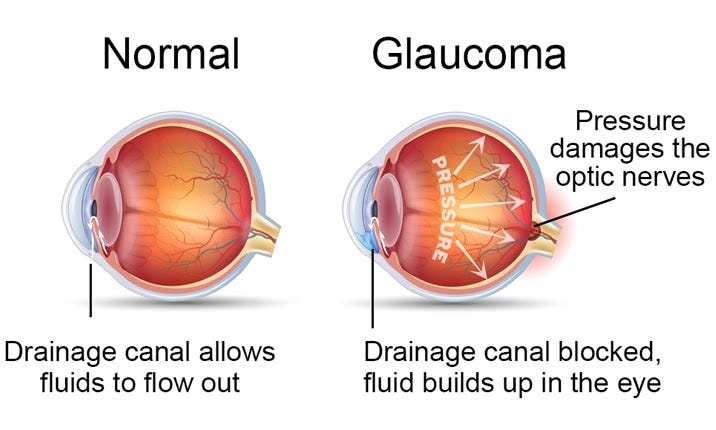Hi NeoMom,
How are you doing? I trust that you are well and that your little one is good too.
Did you know that children can actually have glaucoma which can lead to blindness?
Let's find out more...
Childhood glaucoma is a rare birth defect caused by poor development of the eye’s drainage system before birth that prevents fluid from properly draining from the front part of the eye. This leads to increased pressure inside the eye, which in turn damages the optic nerve if left untreated and can cause complete blindness. The optic nerve is a bundle of nerve fibers that connects the retina with the brain. The retina is the part of the eye that transforms the light coming into the eye into electrical signals which are sent to the brain where they are recognized as images.
Congenital glaucoma is present at birth. Infantile glaucoma develops before the age of three. While glaucoma with onset after age 3 years is called juvenile glaucoma.
Causes?
There are many causes of childhood glaucoma. It can be hereditary or it can be associated with other eye disorders. If glaucoma cannot be attributed to any other cause, it is classified as primary. When glaucoma is a result of another eye disorder, eye injury, or other diseases, it is classified as secondary.
Symptoms?
Babies with glaucoma may have unusually large eyes, one eye larger than the other, a dull or cloudy eye, tears when not crying, redness in the sclera (the white part of the eye), sensitivity to light, or a lot of blinking.
Older children and teens may have blurry vision, nearsightedness that gets worse, difficulty seeing things off to the side (poor peripheral vision), and headaches.
If there is a rapid increase in eye pressure, there may be pain and discomfort. The child may become irritable, fussy, and have a poor appetite.
A child with glaucoma can also be asymptomatic. So it's very important for kids to have regular eye checks as they grow up. Early detection is key to prevent loss of vision. Always consult your child's doctor for a diagnosis as the symptoms of glaucoma may resemble other eye problems or medical conditions.
Diagnosis?
A full medical history is important for diagnosis. Depending on the child's age, some of the following tests may be done:
Visual acuity test: This eye chart test (with letters and images) measures how well the child can see at various distances.
Pupil dilation: The pupil (the black dot in the center of the eye) is widened with eye drops to allow a close-up examination of the eye’s retina.
Visual field: This test measures a child's side (peripheral) vision. Lost peripheral vision may mean the child has glaucoma.
Tonometry to determine the fluid pressure inside the eye.
Treatment?
It is important for the treatment of childhood glaucoma to start as early as possible. Treatment may include medications like topical eye drops or oral medications that will either cause the eye to produce less fluid or lower pressure by helping fluid drain from the eye. Surgery may also be required to correct the structural defects.
Children with glaucoma can lead full and vibrant lives, however, it can result in significant and permanent vision impairment, so proper follow-up and adherence to treatment will ensure better outcomes.
Has your child ever gone for an eye test? Try to book one as soon as possible. Don't forget, we are your sure plug for all things child care. Reach out to us if you have any concerns about your child/ward.
Till next time...
Much love.
Dr. Sefe





